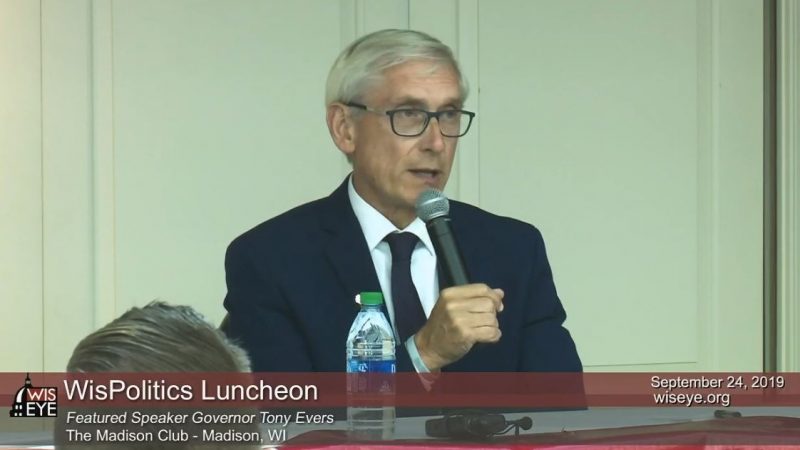Gov. Tony Evers issued more executive orders in his first year than any other guv in Wisconsin history.
He signed 61 executive orders through mid-December. Not only is that a record for a first-year guv, but it’s more than any single calendar year going back to 1965, according to a WisPolitics.com review.
Senate Majority Leader Scott Fitzgerald, R-Juneau, said the number of executive orders was a sign that Evers has been “ineffective” in working with GOP lawmakers to pass bipartisan legislation. As an example, Fitzgerald cited an executive order the guv issued that replaced all references to “mental retardation” in state language with “intellectual disability” and “intellectually disabled.” Evers issued the order shortly before lawmakers released legislation to largely accomplish the same thing.
“He has completely failed to develop a relationship with the Legislature, even when he had numerous opportunities to do so,” Fitzgerald said, “He used one of those executive orders to purposely copy a piece of legislation that should have been an easy bipartisan win. I’m hopeful that we’ll start off better next year, but I’m not holding my breath.”
>> WisPolitics is now on the State Affairs network. Get custom keyword notifications, bill tracking and all WisPolitics content. Get the app or access via desktop.
A spokesman for Evers didn’t respond to multiple requests for comment.
But Senate Minority Leader Jennifer Shilling, D-La Crosse, said she applauds the guv “for taking decisive action despite the repeated efforts from Republicans to prevent progress, undermine this administration and sabotage this economy.”
More than a third of Evers’ executive orders were directives that flags at state buildings fly at half-staff. Beyond those 21 orders, 13 created committees, councils or advisory boards, and eight were for emergency declarations.
Some of the most high-profile include:
*The withdrawal of National Guard troops from the southern U.S. border.
*The re-creation of the Governor’s Pardon Advisory Board.
*Replacing “Columbus Day” with “Indigenous People’s Day” in the state.
*A correction of dates to the previously declared 7th CD special election.
*Calling a Special Session of the Legislature to address gun violence.
Executive orders aren’t mentioned in the state constitution and have only scattered references in statute with no real definition. Fifty-four years ago, Gov. Warren Knowles was the first to use them extensively. Before then, “governors did not issue executive orders in any appreciable number,” according to an LRB report.
The report found that guvs issued fewer than 10 EOs between 1947 and 1965. And LRB said most of them were only used as a means for the guv to follow directions by the Legislature.
Knowles was also the first guv to categorize EOs by number.
Former Gov. Scott Walker signed the second-most EOs at 56 in 2011, his first year in office. In fact, WisPolitics.com’s review found the number of EOs per year has been on the rise regardless of a divided or unified government.
According to LRB, the upward trend is at least partly because guvs now conduct “Head of State,” or ceremonial actions, through executive order. Governors also have the power to declare a State of Emergency, call on a special session of the Legislature, schedule a special election or appoint a non-statutory committee.
LRB’s report said governors are more and more often using the executive order to organize executive branch offices to their political liking. Evers’ first EO directed all state agencies to implement equal opportunity policies and take steps to prevent discrimination and sexual harassment. Walker once banned state agencies from “executing a contract with a business entity if that entity is engaged in a boycott of Israel.”
Evers, Walker and former Gov. Jim Doyle were the only three with over 50 EOs in a single year. They’re also the three most recent guvs.
More than half of all bienniums saw fewer than 61 for the entire session, let alone any single year. Guvs signed an average of 30 EOs per year, with the numbers-per-year slowly rising the further the dates progressed into the 21st century.
“These record figures show how the governor would rather try to work around the Legislature instead of with the Legislature,” said Kit Beyer, a spokeswoman for Assembly Speaker Robin Vos, R-Rochester. “Unfortunately, it’s not surprising.”
See a chart displaying the increasing number of executive orders over the years here.
This story originally appeared in the Dec. 20 WisPolitics.com REPORT. For more on how to subscribe, go here.




